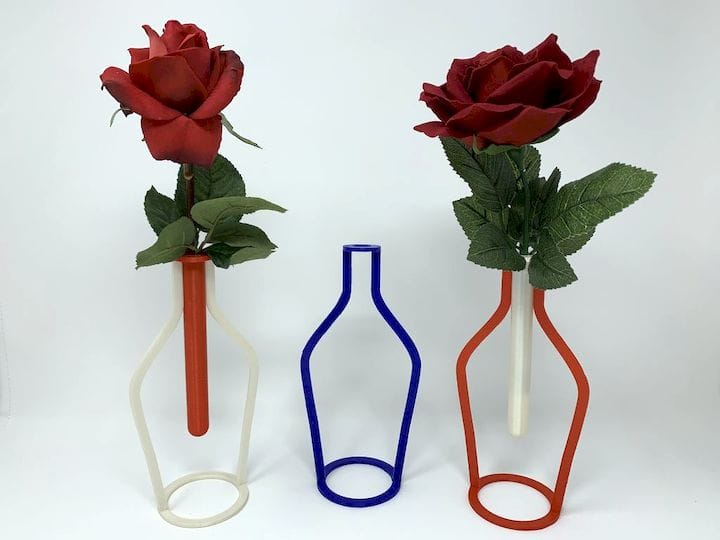![The 3D printed Silhouette Vase [Source: Instructables]](https://fabbaloo.com/wp-content/uploads/2020/05/image-asset_img_5eb0947386b9a.jpg)
This week’s selection is the Silhouette Vase by Maker Design Lab and Greg Zumwalt.
The Silhouette Vase concept was devised by Maker Design Lab and deployed to Instructables as a 2D project, intended to be built using a laser cutter or CNC machine. However, maker Zumwalt didn’t happen to have either of those handy, but he did have a 3D printer.
Zumwalt took the 2D SVG files provided by Maker Design Lab and imported them into Autodesk Fusion 360, where he was able to transform them into full 3D models suitable for printing. This wasn’t a particularly complex conversion, but he’s got it done for you.
The Silhouette Vase design is elegant and simple: it’s simply a 2D outline of a vase, with an attachment to place a test-tube sized receptacle that can hold a flower or plant that would otherwise sit in a real vase.
It’s a cartoony way to view a vase, transforming a real thing into an abstract view, right before your eyes.
The original design assumes you have an actual glass test tube to use in the Silhouette Vase to hold the biological matter. If you have one, then by all means use it. However, if you don’t have one, then Zumwalt has included a printable tube version that can be used instead.
Note however, that 3D prints are notoriously porous, as the layer-by-layer method of construction tends to leave gaps. You may want to read our post on how to waterproof your 3D prints before going too far on that option.
3D Printing the Vase
While these vases could theoretically be 3D printed in one piece vertically, Zumwalt has smartly chopped them into sides, bottom and top pieces to allow for very easy 3D printing, as they are literally 2D components.
However, you’ll need to glue these parts together, and that’s easily done with superglue if you’re printing in PLA.
Zumwalt recommends printing the parts with a brim to hold them down during printing. This may or may not be required, depending on the material you’ve chosen to use and the nature of your 3D printer’s adhesion system. Personally, I’d try it without a brim first to save some post-processing time.
This is a very easy project to complete and results in a decorative item that will surely attract attention.
The only question now is, in what color should you print it?
Via Instructables











This week’s selection is a 3D printed Coronavirus!